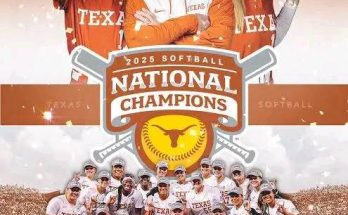What if the Milwaukee Bucks had made one move that would have rewritten the history of the NBA? What if one of the most electrifying players the game has ever seen had joined forces with two of the most dominant stars of their era? What if Julius Erving, the high-flying, gravity-defying forward known to the world as Dr. J, had suited up alongside Kareem Abdul-Jabbar and Oscar Robertson in Milwaukee? That alternate reality very nearly came to pass. In fact, on paper, it did. The Milwaukee Bucks drafted Julius Erving in 1972. But in a twist of fate and legal chaos that would go on to define that turbulent period of professional basketball, the dream of perhaps the greatest superteam that never was slipped through the fingers of the franchise—and with it, a chance at basketball immortality.
To appreciate what was lost, one has to start with the foundation of that Bucks team. In 1971, the Milwaukee Bucks won their first NBA championship just three years into existence, a feat unprecedented at the time. Kareem Abdul-Jabbar (then Lew Alcindor), the most dominant big man the league had seen in a generation, anchored the team with his unstoppable skyhook and a level of fluidity never before seen from a 7-footer. Flanking him was the veteran playmaking genius of Oscar Robertson, who finally achieved his long-sought championship after years of statistical greatness. That Bucks team was surgical, ruthless, and brilliant. But behind the scenes, they knew time was ticking. Robertson was aging, Kareem’s dissatisfaction with small-market Milwaukee would eventually become a concern, and the competition in the league was evolving. They needed another transcendent player to stretch out their championship window.
Enter Julius Erving. By 1972, Erving had already dazzled scouts and fans alike during his time at UMass, where he averaged over 26 points and 20 rebounds per game. The ABA’s Virginia Squires managed to sign him early, and Erving made an immediate impact as a professional, averaging 27.3 points and 15.7 rebounds as a rookie. But in a league plagued by financial instability and fighting for attention with the NBA, Erving’s spectacular talents often felt confined in obscurity. Behind closed doors, teams in the NBA were eyeing the ABA’s best players, and the Bucks saw something more—they saw a way to secure the future.
With a draft pick they acquired via trade, the Milwaukee Bucks selected Julius Erving with the 12th overall pick in the 1972 NBA Draft. They gambled that Erving, despite his existing ABA contract, would either jump leagues or be eligible to do so soon. What followed was not a triumphant transition to Milwaukee, but a messy, prolonged battle involving legal contracts, league politics, and the confused identity of a sport divided against itself.
Erving’s contract with the Virginia Squires was the primary roadblock. It was tightly bound, and the ABA wasn’t keen on seeing its biggest star leap to the NBA. The Bucks tried to negotiate, but the Squires and the ABA weren’t letting go of their golden ticket. The New York Nets eventually acquired Erving’s rights in the ABA and, when the ABA-NBA merger loomed in 1976, it created even more chaos. By that time, the Bucks’ rights to Erving had essentially withered under the weight of prolonged legal inactivity. The NBA, which had never fully enforced or protected the Bucks’ original draft claim, looked the other way as Erving ended up with the Philadelphia 76ers after a contract dispute with the Nets and a refusal by the Sixers’ new ownership to let him slip away.
So, the hypothetical superteam—Oscar Robertson, Kareem Abdul-Jabbar, and Julius Erving—never came to fruition. But it’s hard not to imagine what that trio could have achieved. For one, Erving’s athleticism and flair would have added a dimension to the Bucks’ offense that was ahead of its time. His ability to slash to the rim, elevate above defenders, and run the fast break with Robertson feeding him dimes would’ve made for one of the most thrilling combinations the sport has ever seen. Kareem would have benefited immensely from having both Erving’s spacing and Robertson’s court vision. The trio would have been unguardable in transition, deadly in the half court, and devastatingly efficient with their unique blend of talent, size, and IQ.
From 1972 to 1975, the Bucks remained contenders but were no longer unbeatable. Injuries, aging, and the increasing strength of rivals like the Celtics, Lakers, and Knicks began to wear on them. They made the Finals again in 1974 but lost in seven games to the Celtics. That series could have looked very different with Dr. J cutting through Boston’s defense. Instead, it was the Celtics who lifted the trophy, and the Bucks’ championship window began to close. Oscar retired in 1974. Kareem, frustrated with life in Milwaukee and seeking a more culturally stimulating environment, requested a trade and was sent to the Los Angeles Lakers in 1975.
Had Erving joined the team as expected in 1972, Kareem may have stayed. With Dr. J emerging into his prime, the Bucks could have reloaded around the superstar duo even after Robertson’s retirement. Milwaukee might have become the dynasty that Los Angeles became. Erving and Kareem could have ruled the late ’70s and perhaps even delayed the dominance of Larry Bird and Magic Johnson in the ’80s.
In an ironic twist, Erving would go on to form his own kind of superteam in Philadelphia, teaming up with Moses Malone and leading the 76ers to the 1983 NBA championship. He had a storied career, but even then, many believed he had been denied the true heights of team success that his talent merited due to bad timing and franchise instability. The same could be said for the Bucks, who entered the late ’70s and early ’80s with a solid team but never again reached the NBA Finals during that era.
The tale of Julius Erving and the Milwaukee Bucks is not just a story of what could have been. It is a vivid example of how the structure of the professional basketball world—fractured, competitive, and at times, legally convoluted—can alter the course of sports history. A draft pick that should have changed everything for a franchise instead became a trivia fact. A legal technicality that should have been a launching pad for a dynasty instead became a footnote in the back-and-forth battles between the NBA and ABA. Fans in Milwaukee were left to wonder not just what might have happened, but why it never did.
The day the Milwaukee Bucks drafted Julius Erving is now shrouded in a kind of mythos, a fork in the road where destiny took a hard left instead of a smooth right. In an era before salary caps, agents as powerbrokers, or social media campaigns to “bring him home,” the mechanics of control belonged to the teams and leagues—but rarely aligned with common sense or fair play. Had the Bucks been able to enforce their rights, had the NBA prioritized its own competitive balance over league rivalries, or had Dr. J simply been set free from ABA shackles a few years sooner, the annals of NBA history might look drastically different.



